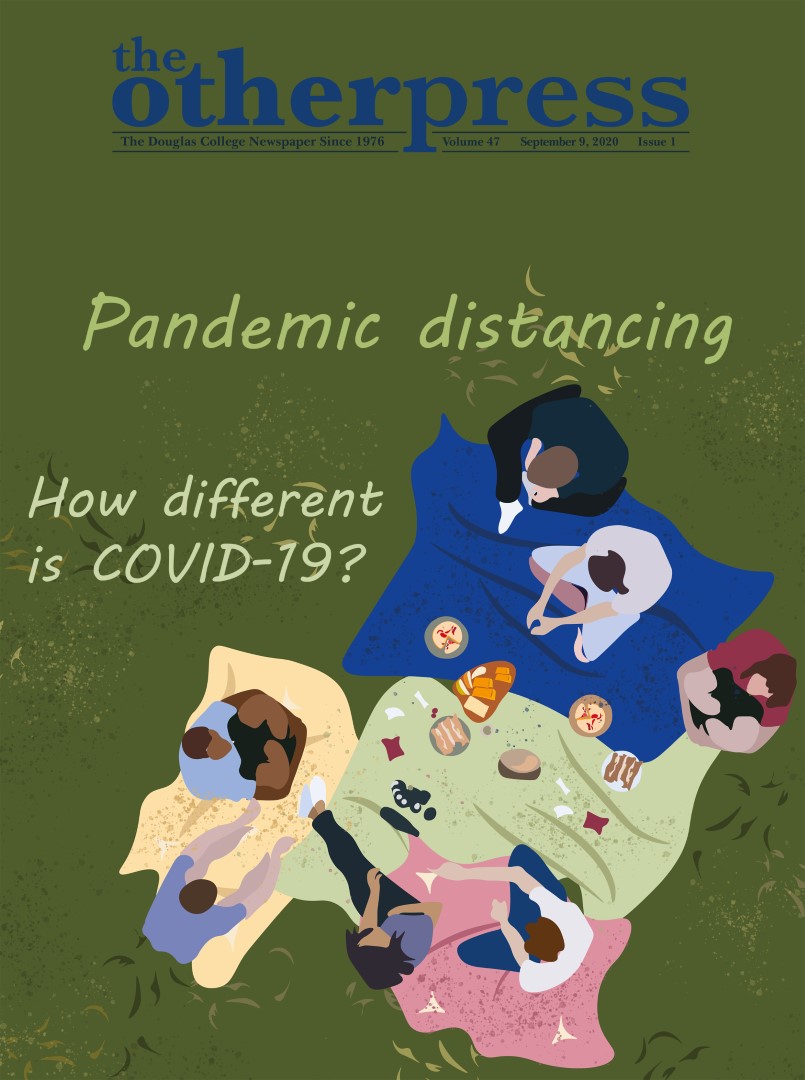How similar were the precautions, the fatality rates, and the economic impacts?
By Janis McMath, Editor-in-Chief

Since the beginning of this COVID-19 pandemic, news outlets everywhere have been trying to scrutinize this disease from every angle possible. A common tactic is to compare the current outbreak to ones long past. Practices during different pandemics mirror that of today’s, so their successes and failures can give us some insight. These comparisons also may inform us as to what we should be preparing for.
Yet these past pandemics and epidemics are greatly contrasted to our current outbreak in a multitude ways. There are multiple important factors to consider when trying to understand exactly how helpful some comparisons are while trying to navigate COVID-19.
Spanish Flu 1918
Commonly called one of the deadliest pandemics ever, it is often highlighted that nearly as many Canadians died from this influenza than they did in WWI. Another comparison made is that this 1918 flu killed more people in just over a year than the black plague killed in 100 years. It is easy to find headlines comparing the Spanish Flu and COVID-19, and a CTV News article states: “Despite a century’s progress in science, 2020 is looking a lot like 1918.”
And there are many similarities. According to a CTV News article, The Chicago health commissioner in 1918 said “If you get it, stay at home, rest in bed, keep warm, drink hot drinks, and stay quiet until the symptoms are past.” Measures included closing schools and churches. Some places banned all public gatherings. Mandatory face masks mirror present day precautions taken by TransLink and many grocery stores like T&T Supermarket, Superstore, and Starbucks. Fines for public coughing and sneezing also existed. These fines are reminiscent of BC’s new mandate that allows police officers to hand out tickets to businesses for $2,000 and individuals for $200 for failing to follow provincial health guidelines. Winnipeg’s fines at the time were $50 for spitting—which would be equal to $725.53 today.
The differences between the 1918 pandemic and our pandemic now in 2020 are essential to know before coming to any conclusions. First, an important note that greatly differentiates us from 1918: There was a world war. Weakened soldiers travelling across the globe without access to proper information about the pandemic due to censorship was a huge reason for large death tolls and rapid spread. The war also had doctors overseas—so the shortage of medical professionals at home caused huge problems for many countries. Secondly, they had none of the antibiotics we have access to today which are used to treat secondary bacterial infections; experts suggest that the majority of those killed by the Spanish Flu actually died from secondary bacterial pneumonia.
How deadly the most devastating flu in history was
Another point to look at is how deadly this strain of influenza really was. Initially, WHO officials put COVID-19’s case fatality rate (CFR)—which means how many cases out of 100 confirmed cases would result in death—at 2 but then later revised it to 3.4 percent. Even though it was regularly mentioned that it is difficult to properly calculate CFR at the beginning of a pandemic, a common sentiment among news outlets was that this 2 to 3 percent was eerily reminiscent of the Spanish Flu’s CFR. Yet, as an article from Wired points out, the Spanish Flu did not have a CFR of two to three as many news outlets mistakenly report. The CFR of the Spanish Flu is an alarming estimated 6 to 10 percent according to more recent and accurate calculations by Johns Hopkins University epidemiologist Jennifer Leigh, for example. In comparison, many of the updated estimates of COVID-19—obviously working with incomplete data—have now dropped to somewhere around 1 percent. It is important to note that during 1918 medical records were not as advanced as they are now, but the estimates put the number of worldwide deaths at around 25 million people for the Spanish Flu…on the low end—100 million on the high end. At home in BC, entire Haida settlements were wiped out by the 1918 flu.
While COVID-19 has definitely had a few cases where young and healthy people in the prime of their lives have died, the data shows that for Canada (as of September 6) of 9,011 deaths, more than 70 percent of deaths happened to those that are 80 years of age and higher, nearly 20 percent of deaths happened to those that are in the 70 to 79 age range, around 7 percent of deaths happened to those aged 60 to 69, and a bit over 2 percent in ages 50 to 59—accounting for almost all deaths. In stark contrast, the 1918 influenza hit young people hard; 50 percent of all of those who died to the Spanish Flu were aged 20 to 40, and 99 percent were younger than 65 years.
SARS
2003
With
one of the highest CFRs among all epidemics—which
the WHO puts at 15 percent—SARS
is one of the most lethal illnesses on this list. It is similar to COVID-19
considering that the greatest risk is for those that are older (CFR is 50 percent for those 65
and older), and the CFR is much lower (dropping to a range of 15 to 1 percent)
in younger people. While it is not a pandemic like COVID because it was not as
widespread globally, this 2003 scare has many comparable lessons for us now.
SARS is also a coronavirus (also known as SARS-CoV) that came out of China
which affects the respiratory system and spreads through respiratory droplets.
Contact tracing, a precaution taken now in hospitals, some restaurants, and even small personal gatherings, was also taken during SARS. Because the symptoms of SARS-CoV are so extreme, it was simple to identify cases and quarantine them to prevent spread. Actually, in Canada, all 438 suspected SARS cases could be traced to one 78-year-old Canadian woman in Toronto who had just come home from Hong Kong. In response, the hospital that held the SARS patients shut down emergency and intensive care services and asked those who had recently visited to quarantine. Airports scanned for high fevers. Lockdowns did not occur across the country unlike COVID-19, but all those who were exposed to SARS were asked to quarantine for 10 days. Many willingly quarantined in their homes.
SARS and COVID-19: Struggles in the tourism industry
Another similarity between these two coronaviruses is the shutdown of travel and tourism. Only 26 countries were affected by this outbreak (small compared to the 188 countries COVID-19 has reached) and 774 people worldwide died from SARS. Non-essential travel to most countries was cut. This had a great impact on the countries who faced this epidemic—and even those that did not. Countries that had no infections saw a huge dip. It was estimated by the World Travel and Tourism Council that up to three million people working in the tourism industry lost their jobs and it reduced the global GDP by $33 billion. Canada took an estimated hit of $5.25 billion. Asian countries that were nearly or totally unaffected saw tourist arrivals drop by 70 percent or more.
COVID-19 certainly shares this struggle with SARS, but experts estimate that this blow will be much harder. The United Nations reports that a proximate $1 trillion and 100 million jobs worldwide is the loss the tourism industry will be taking—an industry that employs 1 in 10 people globally. This is hugely negative in developing countries and small areas where tourism represents a large part of their exports. In fact, the same thing has happened close to home. As a Global News article reports, Banff’s whole economy depends on tourism and when COVID-19 restrictions were put in place, an estimated 6,000 people lost their jobs—in a town of around 9,000. As the United Nations reports, 80 percent of all tourism businesses are micro, small, or medium sized enterprises (which also largely employ women and young people).
Asian Flu 1957
After looking at the Spanish Flu and SARS, this strain of influenza seems to be more like COVID-19 in terms of fatality rate, worldwide deaths, age ranges affected, and pandemic practices.
First and foremost, the CFR of the 1957 flu was 0.6 percent. While COVID-19’s is current is higher—
around 1 percent—that number is still in flux. And considering that the general trend for most countries is that recorded infections are consistent or growing but deaths are stagnating or dropping (for example, in Canada new cases are consistently in the 300 to 700 range but deaths have generally been in the single digit range since the beginning of July), we could be looking at a reduction in COVID-19’s CFR as well.
As of September 8, there are about 891,000 deaths worldwide due to COVID-19. At the end of the 1957 flu, about one to two million people had died from the disease. And while COVID-19 is not yet finished, the rate of infections and deaths is similar considering that the 1957 flu ended in 1958—lasting a year, almost similar to COVID-19’s current stretch (which we first heard reports of in December 2019). While we cannot know when coronavirus will end, the rate of deaths is much more comparable to this 1957 influenza than the Spanish Flu for example—which killed significantly more people in three months than COVID-19 has over nearly nine.
Another similarity to consider is in the severity. Like COVID, some cases of this flu were mild and others developed very serious and threatening conditions after being infected. The age groups affected are also very similar seeing how the elderly and those with pre-existing conditions were most likely to be at risk. A dissimilarity to note between these two pandemics is the economic impact. There was only some interruption in society, as most of those who were missing from their regular roles were school children, teachers, and healthcare workers. The impact of this disruption caused little economic issues and recovery was “almost immediate.”
When reviewing pandemics and epidemics, it is clear that we have lived through many disastrous periods in history—many of which have created a healthy fear in us for the future of the current coronavirus. And while it is good practice to be appropriately anxious, a side-by-side of many of the statistics of each pandemic can put our mind at ease when overzealous comparisons are made.


